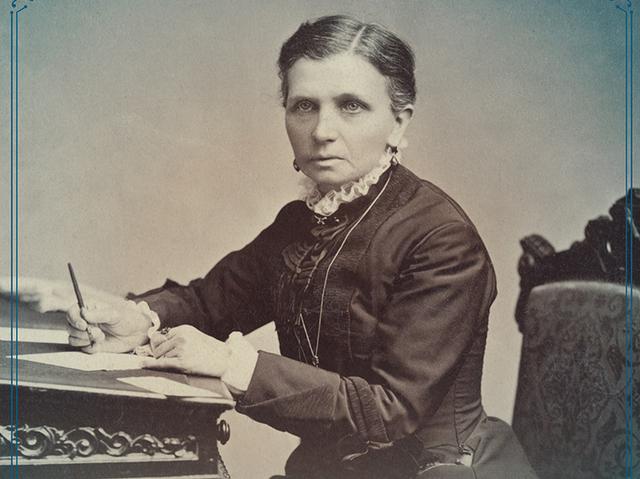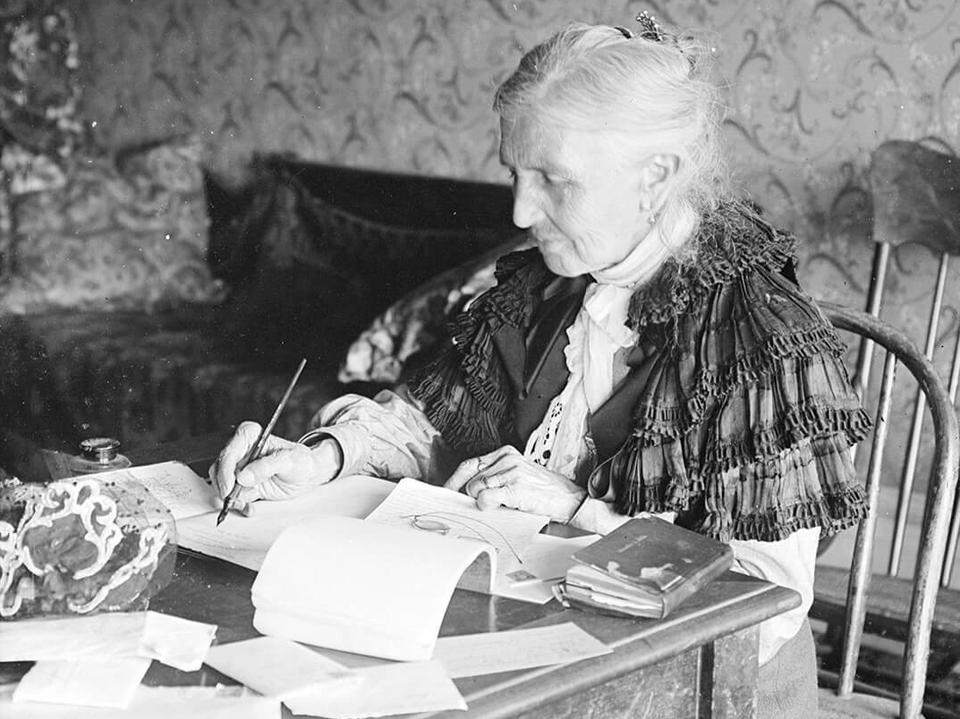
Emmeline-B.-Wells-2
Emmeline B. Wells working at a desk, circa 1890. Photo courtesy of Church History Library.This story appears here courtesy of TheChurchNews.com. It is not for use by other media.
By Sydney Walker, Church News
At the beginning of 1897, Latter-day Saint leader and women’s rights activist Emmeline B. Wells was 68 years old. Utah women had secured the right to vote with statehood a year prior. But Emmeline’s fight for suffrage wasn’t over.
“Instead of settling down and just saying ‘Oh great, our voting rights as a state are secured,’ Emmeline’s diary entries in these years are full of her activity still supporting suffrage, still wanting suffrage — she wanted it for women everywhere but what she could focus on was women in the United States,” said Kate Holbrook, managing historian of women’s history in the Church History Department.
The August 31 release of Emmeline B. Wells’ diaries spans 1897 through 1900 and includes her involvement in national suffrage, women’s clubs, local politics and Relief Society. The first groups of Emmeline’s diaries were published by the Church Historians’ Press last year and more will be added in the coming months and years.
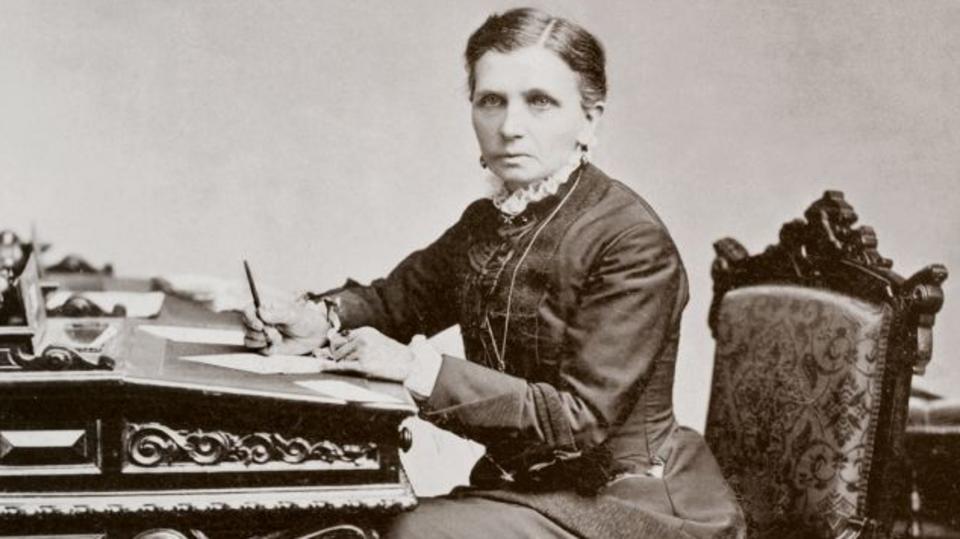
Emmeline-B.-Wells-2
Portrait of Emmeline B. Wells taken January 14, 1879. Emmeline B. Wells traveled to Washington, D.C., in January 1879 to attend the annual convention of the National Woman Suffrage Association. In her diary entry of January 14, Wells noted, “This morn. went to Photo-gallery had pictures taken.” The photograph was taken at the Charles M. Bell studio in Washington. Photo courtesy of Church History Library.
In late 1900 Emmeline began writing a history of the suffrage movement in Utah. Utah women were the first to vote in the United States under an equal suffrage law in 1870 but were disenfranchised by federal anti-polygamy laws in 1887. Suffrage was included in the new state constitution when Utah became a state in 1896.
“It is a Herculean work,” Emmeline wrote in her diary on October 13, 1900, of compiling such a history.
Emmeline’s effort would not only be helpful for historical purposes but for women in other places obtaining the right to vote, Holbrook said. “I think [writing a history] demonstrates how she was always very clear on things that were most important to be done for the benefit of Church members and especially for the benefit of women.
“That seemed to be her special calling, and she always knew what to do to support those causes.”
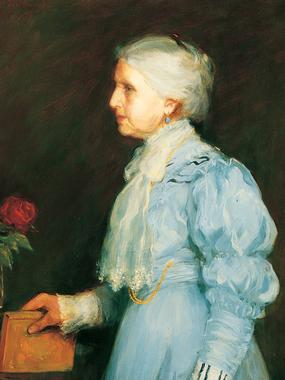
Emmeline-B.-Wells-2
Official portrait of Emmeline B. Wells, fifth general president of the Relief Society, by Lee Greene Richards, courtesy of the Church History Library.2020 by Intellectual Reserve, Inc. All rights reserved.‘Climax of Her Public Life’
Cherry Silver, co-editor for the Emmeline B. Wells diaries project, described this time period as “a climax of her public life.”
Emmeline’s volume of poetry “Musings and Memories” was published in 1897 — perhaps the highlight of her literary life.
In 1899 she traveled to England to serve as a delegate for the International Council of Women. She delivered a paper, attended receptions and rubbed shoulders with literary figures and international personalities.
Emmeline wrote in her diary on June 23, 1899: “Today I have fulfilled one of the dreams of my life, that of seeing Westminster Abbey. Mrs. [Susa Young] Gates & [Elizabeth Claridge] Mc’Cune were with me & had both been there before. I shall go again alone as it is the one place most sacred to me and I know I am more emotional than I can express with others.”
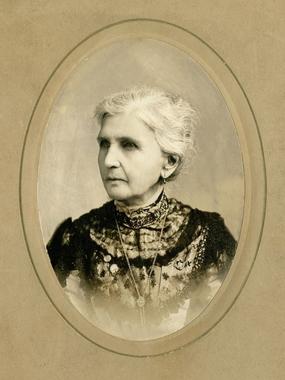
Emmeline-B.-Wells-2
Portrait of Emmeline B. Wells.2020 by Intellectual Reserve, Inc. All rights reserved.Of Emmeline’s experience, Holbrook noted: “I think she was a real thinker and she cared a lot about literature. … Another thing this shows to me is what a serious person she could be, how seriously she took these historical moments and holy places, and how she figured out how to experience them on her terms.”
While abroad, Emmeline visited Paris and toured England and Scotland, meeting with Church members and missionaries. Emmeline was serving as corresponding secretary for Relief Society General President Zina D. H. Young.
“She goes to visit the Church meeting in London and finds that the Relief Society there is no longer meeting,” Silver said. “It’s died, as she says in her diary. So she says ‘We can help that’ and arranges to go back with a couple of the other women from Utah, and they start the Relief Society again in the London branch.”
Though she was occupied with international leaders, she remained concerned for the members of the Church and how she could help support them, Silver said.
A Work of ‘Heart and Brain’
Emmeline’s diary entries also reveal how busy and dedicated she was. On October 1, 1900, she recorded, “I am so full of work and so exhausted all the time that it is all I can do to keep myself in condition to do the work required with heart and brain.”
Why “heart and brain”? Silver said she believes Emmeline felt pressure from three areas. First, she was editing the Woman’s Exponent and wrote all the correspondence for the general Relief Society. She had an office in town where women from all over the Church often stopped by to visit her and get instruction on how to manage their Relief Society callings.
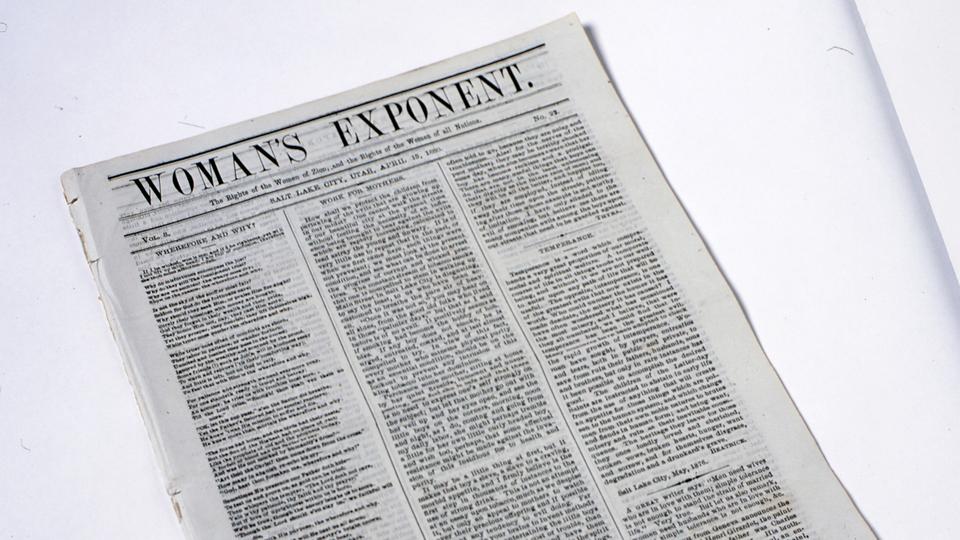
Emmeline-B.-Wells-2
A page from the Women's Exponent, a newspaper written by and for Latter-day Saint women that was published between 1872 and 1914. Emmeline B. Wells was a frequent contributor, eventually serving as editor.2020 by Intellectual Reserve, Inc. All rights reserved.Second, “she was a very organized leader who like to follow Roberts’ Rules of Order and parliamentary procedures,” Silver said. But board and committee meetings run by other women were not always well managed. And third, through all her public service, Emmeline had ambitions to write literature but struggled to find time to do so.
“I see Emmeline in the middle of a dynamic life that asked a lot of her,” Silver said. “She could soldier on, but she could also wax impatient from time to time. A cluster of entries like this show the pressures she bore and the greatness of her endurance.”
Despite her busy schedule, Holbrook said, Emmeline made time for friends and family. “One minute, she’ll be giving a talk in a prominent place, and the next minute, she’ll be having dinner with her daughter and her daughter’s family. …
“I think the fact that she often got together with friends and family members to share meals and often went to the theater or lectures are hints as to why she was able to accomplish as much as she did. She wasn’t working every minute. She also spent time with loved ones and pursued activities that fed her soul.”
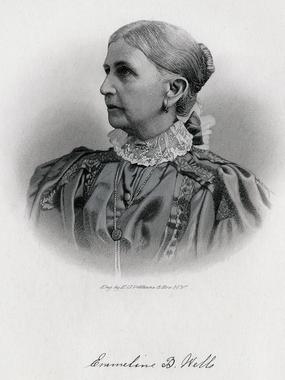
Emmeline-B.-Wells-2
This engraved portrait of Emmeline B. Wells appeared in Orson F. Whitney’s History of Utah. Engraving by E. G. Williams and Bro., New York. Photo courtesy of the Church History Library.During this time period, Emmeline’s interests began to expand to include heritage organizations. In 1898 she helped Susa Young Gates form a local chapter of the Society of the Daughters of the Revolution of 1776. When a statewide society was organized a few months later, Emmeline was elected regent.
That year Emmeline was also named to a committee appointed to handle funds and plan for a Relief Society building. Despite the committee’s best efforts, various roadblocks would prevent the plans from moving forward. (Construction on a Relief Society building didn’t begin until 1953).
For Emmeline, this was “a real disappointment and heartache,” Holbrook said. But she persevered.
Holbrook added: “I think one of the things that I learned from Emmeline Wells is how you have the things that you believe in your heart and you believe God wants you to accomplish. And things always go wrong, there are always things that get in the way. But God wants you to accomplish them, so you just keep finding a way to keep going and make them happen.
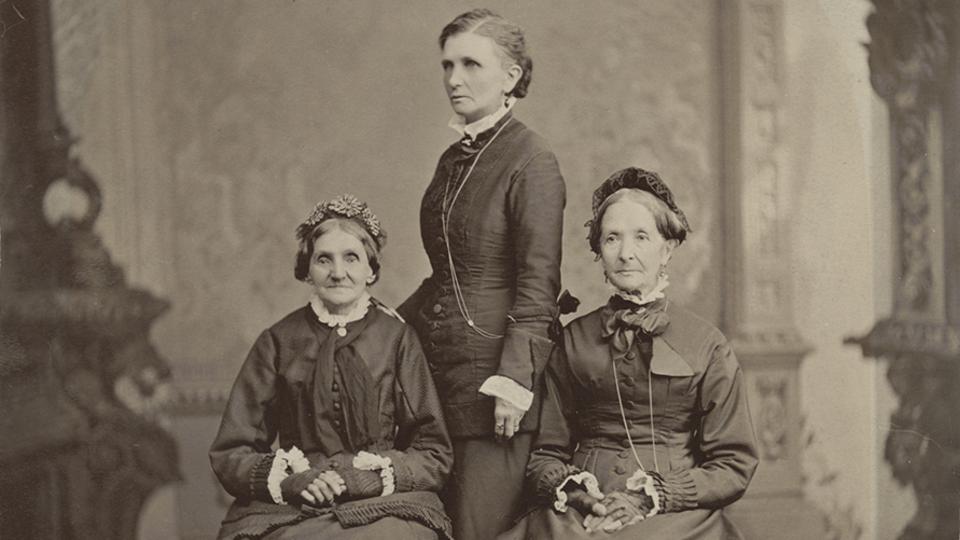
Emmeline-B.-Wells-2
Left to right: Elizabeth Ann Whitney, Emmeline B. Wells, and Eliza R. Snow. Photograph by Charles R. Savage, circa 1876. Photo courtesy of the Church History Library.“And that’s really one of the main stories I see in all of her diaries, is when it’s your calling to see that the thing happens, you don’t get discouraged. … You maintain the hope and you work hard, and with God’s help, eventually what needs to happen happens. But it won’t happen if you give up.”
Read annotated transcripts of the 1897-1900 diaries at ChurchHistoriansPress.org/Emmeline-B-Wells.
Copyright 2021 Deseret News Publishing Company
